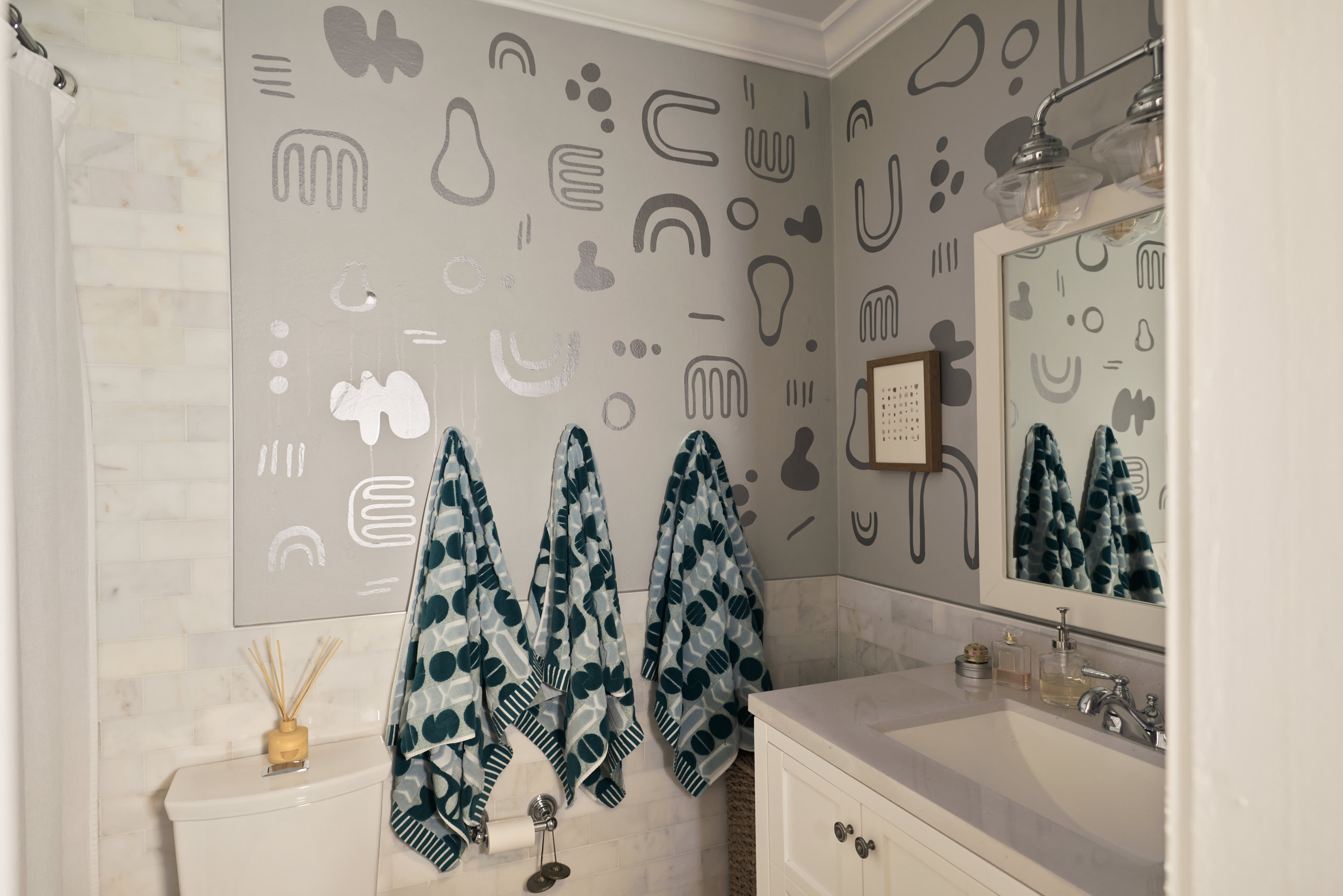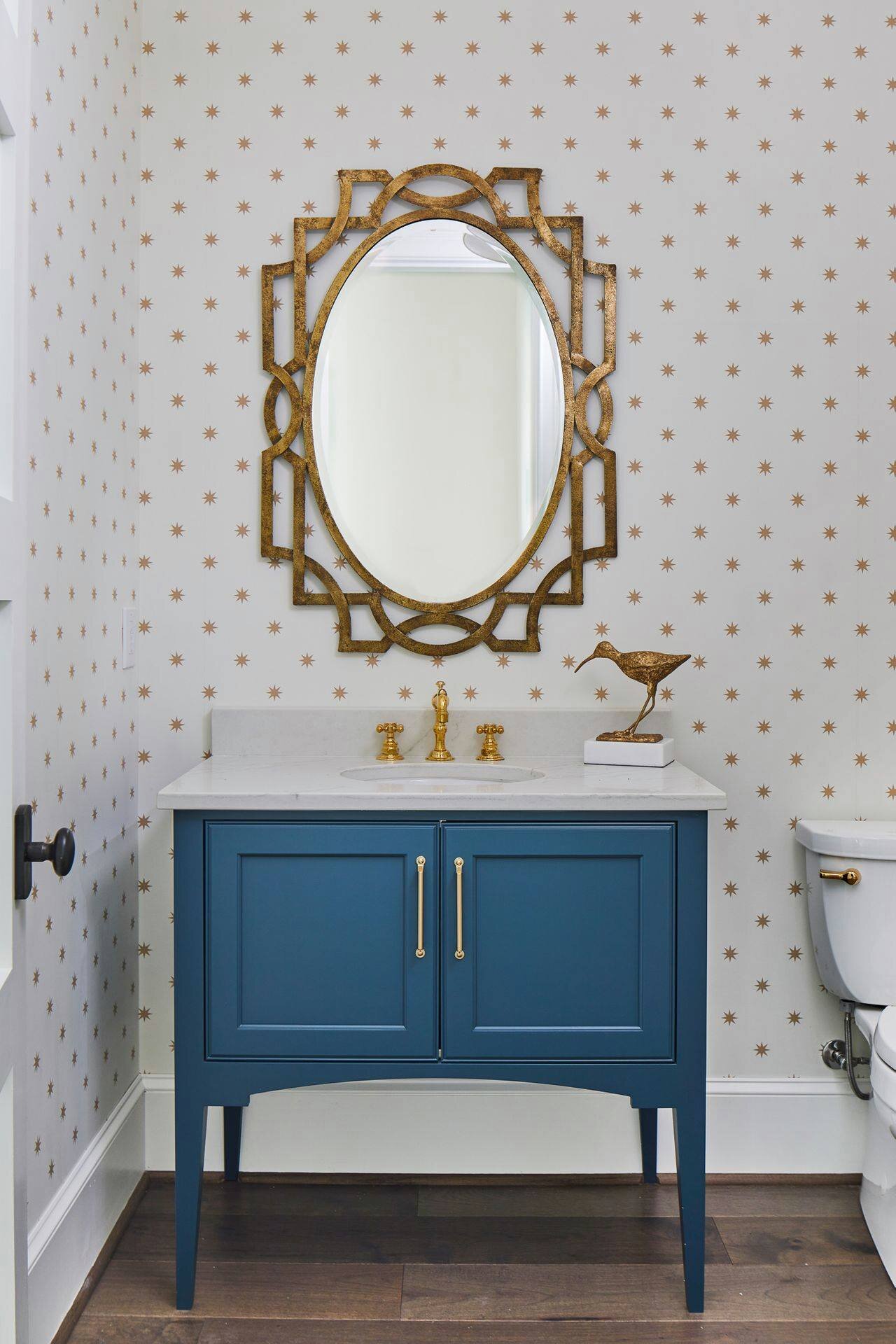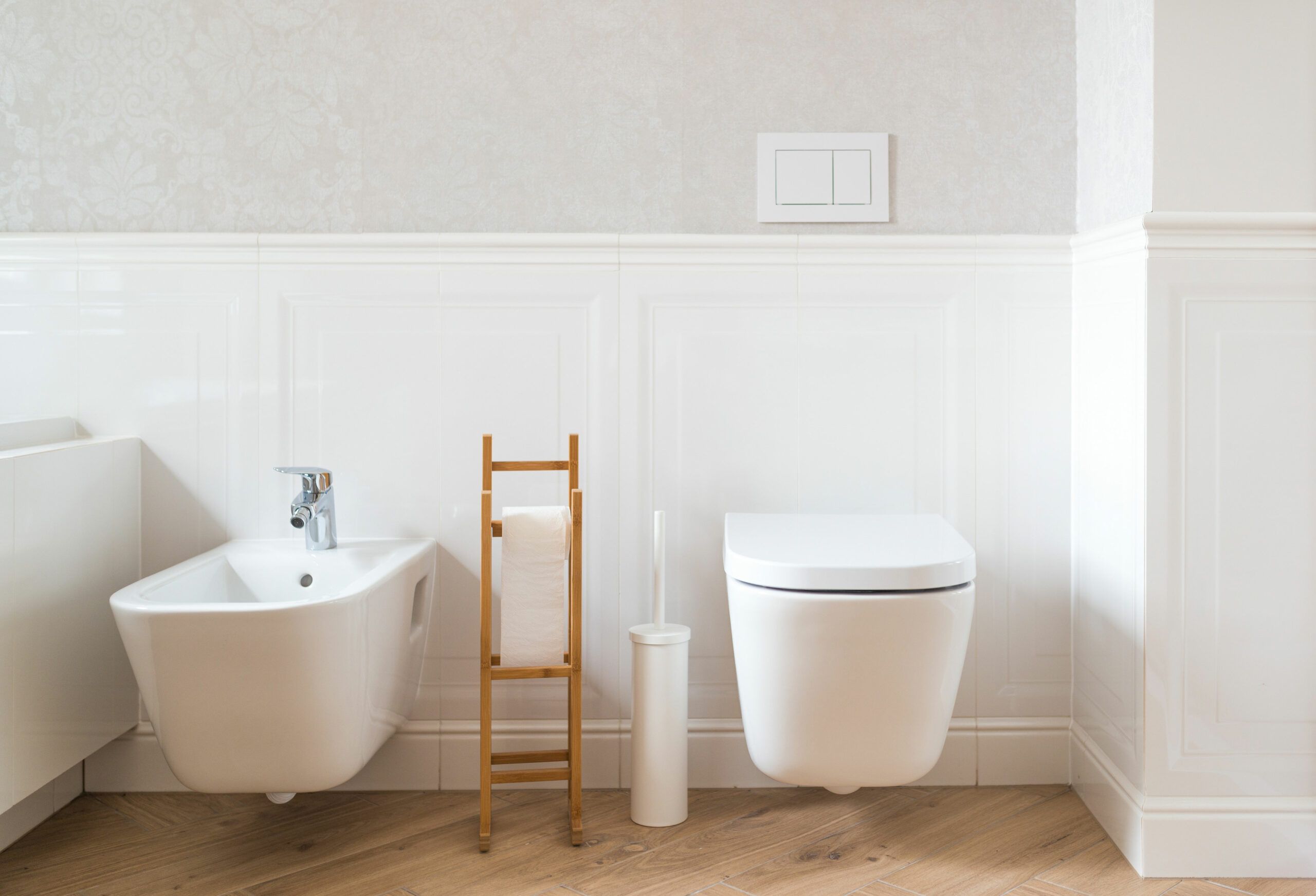Contents
- I. Introduction to Toilet Space Requirements
- II. Factors to Consider When Determining Toilet Space
- III. Standard Dimensions for Toilet Space
- IV. Importance of Adequate Toilet Space
- V. Frequently Asked Questions about Toilet Space Requirements
- 1. What is the minimum space required for a toilet?
- 2. Can I install a toilet in a small bathroom?
- 3. How much clearance space do I need around a toilet?
- 4. Can I install a toilet near a wall or other fixtures?
- 5. Are there any height requirements for a toilet?
- 6. Can I install a toilet in a basement or below-grade area?
- 7. Can I install a toilet in a mobile home or RV?
- 8. Are there any specific requirements for commercial or public toilets?
I. Introduction to Toilet Space Requirements

When it comes to designing or renovating a bathroom, one of the most important considerations is the space required for a toilet. Whether you have a small powder room or a spacious master bathroom, understanding the toilet space requirements is essential for creating a functional and comfortable space.
First and foremost, it is crucial to ensure that there is enough clearance around the toilet for ease of use and accessibility. The minimum required clearance space in front of the toilet should be at least 21 inches. This allows for comfortable sitting and standing without feeling cramped.
In addition to the clearance space in front of the toilet, it is also important to consider the clearance space on either side. The minimum required clearance space on each side of the toilet should be at least 15 inches. This provides enough room for individuals to comfortably reach the toilet paper dispenser or grab bars if needed.
Furthermore, the distance between the toilet and any other fixtures or walls should also be taken into account. The minimum required distance from the centerline of the toilet to the nearest wall or fixture should be at least 15 inches. This ensures that there is enough space for proper installation and maintenance of the toilet.
Lastly, it is important to consider the overall layout and design of the bathroom when determining the space required for a toilet. If you have a small bathroom, you may need to explore space-saving options such as corner toilets or wall-mounted toilets. On the other hand, if you have a larger bathroom, you may have more flexibility in terms of toilet placement.
II. Factors to Consider When Determining Toilet Space

When it comes to determining the space required for a toilet, there are several factors that need to be taken into consideration. As an experienced plumber with years of expertise in the field, I have encountered various scenarios where the wrong toilet size led to inconvenience and discomfort for homeowners. In this section, I will share my insights on the factors that should be considered when determining the space needed for a toilet.
1. Available Floor Space
The first and most obvious factor to consider is the available floor space in the bathroom. Measure the dimensions of the area where the toilet will be installed, taking into account any obstructions such as walls, cabinets, or fixtures. It is important to ensure that there is enough space for the toilet to fit comfortably without feeling cramped.
Typically, a minimum clearance of 15 inches is required on each side of the toilet bowl. This allows for easy access and maneuverability. Additionally, there should be enough space in front of the toilet for the user to comfortably sit down and stand up.
2. Rough-In Measurement
The rough-in measurement refers to the distance between the wall behind the toilet and the center of the drainpipe. This measurement is crucial as it determines the type of toilet that can be installed. The standard rough-in measurement is 12 inches, but older homes may have a 10-inch or 14-inch rough-in.
It is important to choose a toilet that matches the rough-in measurement of your bathroom to ensure a proper fit. Installing a toilet with the wrong rough-in measurement can lead to leaks and other plumbing issues.
3. Bowl Shape and Size
Another factor to consider is the shape and size of the toilet bowl. There are two main bowl shapes to choose from: round and elongated. Round bowls are more compact and are a good option for smaller bathrooms, while elongated bowls provide more comfort and are ideal for larger bathrooms.
In terms of size, toilets come in different dimensions. It is important to choose a toilet that fits well within the available space without obstructing other fixtures or impeding movement in the bathroom. Consider the overall dimensions of the toilet, including the width, depth, and height.
4. ADA Compliance
If you or someone in your household has mobility issues or disabilities, it is important to consider ADA (Americans with Disabilities Act) compliance when choosing a toilet. ADA-compliant toilets are designed to be accessible and comfortable for individuals with disabilities.
These toilets have specific requirements, such as a higher seat height, grab bars, and a larger bowl size. Ensuring ADA compliance will not only provide convenience for individuals with disabilities but also increase the overall accessibility and usability of the bathroom.
5. Personal Preferences
Lastly, personal preferences should also be taken into account when determining the space needed for a toilet. Some individuals may prefer a toilet with additional features such as a bidet function, heated seat, or self-cleaning capabilities. These features may require additional space or electrical connections.
Consider your own preferences and the needs of your household when choosing a toilet. It is important to strike a balance between functionality, comfort, and personal preferences.
III. Standard Dimensions for Toilet Space

When it comes to designing or remodeling a bathroom, one of the most important considerations is the space required for a toilet. The dimensions of the toilet space can greatly impact the comfort and functionality of the bathroom. As an experienced interior designer with a passion for creating functional and aesthetically pleasing spaces, I have encountered various toilet space requirements throughout my career. In this section, I will provide you with the standard dimensions for a toilet space, based on industry guidelines and my own professional insights.
The Minimum Dimensions
According to the National Kitchen and Bath Association (NKBA), the minimum dimensions for a toilet space are as follows:
- Width: The minimum width required for a toilet space is 30 inches. This measurement ensures that there is enough space for the toilet bowl and allows for comfortable movement around the toilet.
- Depth: The minimum depth required for a toilet space is 60 inches. This measurement includes the depth of the toilet bowl and the clearance required in front of the toilet.
- Height: The height of the toilet space should be at least 80 inches. This measurement allows for sufficient headroom and ensures that the toilet is accessible for people of all heights.
It is important to note that these dimensions are the minimum requirements and can vary depending on the specific needs and preferences of the homeowner. Additionally, local building codes may have their own set of regulations regarding toilet space dimensions. It is always advisable to consult with a professional designer or contractor to ensure compliance with local regulations.
Optimal Dimensions for Comfort
While the minimum dimensions provide a starting point for toilet space design, it is often desirable to have more space for added comfort and functionality. Based on my experience and industry best practices, I recommend the following optimal dimensions for a toilet space:
- Width: To allow for comfortable movement and easy access, a width of 36 inches or more is ideal. This additional space provides room for maneuvering and can accommodate individuals with mobility challenges.
- Depth: For optimal comfort, a depth of 72 inches or more is recommended. This extra depth allows for ample legroom and prevents a cramped feeling when using the toilet.
- Height: While the minimum height requirement of 80 inches is sufficient for most individuals, a higher ceiling height can create a more spacious and open feel in the bathroom. A ceiling height of 96 inches or more is ideal for achieving this effect.
By incorporating these optimal dimensions into your toilet space design, you can enhance the overall comfort and functionality of your bathroom.
Considerations for Small Spaces
In some cases, homeowners may have limited space available for a toilet. When designing a toilet space in a small bathroom or powder room, it is important to make the most of the available space without compromising on comfort. Here are a few considerations for small spaces:
- Compact Toilets: Opt for compact toilets that are specifically designed for small spaces. These toilets have a smaller footprint and can fit into tight corners or against walls, maximizing the use of space.
- Wall-Mounted Toilets: Consider installing a wall-mounted toilet to save floor space. These toilets are mounted on the wall, with the tank hidden behind the wall. This design creates a sleek and modern look while freeing up valuable floor space.
- Space-Saving Fixtures: Choose space-saving fixtures such as corner sinks or narrow vanities to create more room for the toilet. These fixtures can be strategically placed to maximize the available space.
By implementing these strategies, you can optimize the use of space in a small bathroom while still providing a functional and comfortable toilet area.
IV. Importance of Adequate Toilet Space

As an experienced interior designer and bathroom specialist, I cannot stress enough the importance of adequate toilet space in any bathroom or powder room. The toilet is one of the most frequently used fixtures in a household, and it is crucial to ensure that it is comfortable and functional for all users. In this section, I will delve into the various reasons why having sufficient toilet space is essential for both practical and aesthetic purposes.
1. Comfort and Accessibility
One of the primary reasons why adequate toilet space is crucial is for the comfort and accessibility of the user. A cramped and narrow space can make it difficult for individuals to maneuver, especially for those with mobility issues or disabilities. By providing ample space around the toilet, it allows for easier movement and ensures that users can comfortably sit and stand without feeling confined.
Moreover, having enough space around the toilet also allows for the installation of grab bars or handrails, which can greatly enhance the safety and accessibility of the bathroom. These features are particularly important for older adults or individuals with physical limitations, as they provide additional support and stability.
2. Hygiene and Cleaning
Adequate toilet space is not only essential for the comfort of the user but also for maintaining proper hygiene and facilitating easy cleaning. When there is sufficient space around the toilet, it becomes much easier to clean the area thoroughly, including the floor, walls, and base of the toilet.
Additionally, having ample space allows for better ventilation, reducing the buildup of unpleasant odors and preventing the growth of mold and mildew. This is especially important in bathrooms with limited natural ventilation or in humid climates where moisture can accumulate easily.
3. Visual Appeal and Design
From a design perspective, having adequate toilet space is crucial for creating a visually appealing and well-balanced bathroom. A cramped and crowded toilet area can make the entire bathroom feel claustrophobic and uninviting. On the other hand, a well-designed and spacious toilet area can contribute to the overall aesthetics of the space.
By providing enough space around the toilet, it allows for the inclusion of other design elements such as storage cabinets, decorative accents, or even a small seating area. These additions can enhance the functionality and style of the bathroom, creating a more enjoyable and personalized space for the user.
4. Future-Proofing and Resale Value
Lastly, adequate toilet space is an important consideration for future-proofing your bathroom and increasing its resale value. As trends and preferences change over time, having a bathroom with sufficient space around the toilet ensures that it can easily accommodate any future upgrades or modifications.
Furthermore, when it comes to selling your home, potential buyers often prioritize bathrooms that offer comfort, functionality, and a sense of spaciousness. A well-designed and adequately spaced toilet area can be a significant selling point and may even increase the overall value of your property.
V. Frequently Asked Questions about Toilet Space Requirements

As an experienced plumber with over 10 years of expertise in the field, I often come across various questions about toilet space requirements. In this section, I will address some of the most frequently asked questions to help you better understand the space needed for your toilet installation.
1. What is the minimum space required for a toilet?
The minimum space required for a toilet depends on the building codes and regulations in your area. Generally, a standard toilet requires a space of about 30 inches by 60 inches. This includes the space for the toilet bowl, tank, and clearance for comfortable use. However, it is always recommended to check with your local authorities or consult a professional plumber to ensure compliance with specific requirements.
2. Can I install a toilet in a small bathroom?
Yes, you can install a toilet in a small bathroom. There are compact toilets available in the market that are specifically designed to fit in tight spaces. These toilets have a smaller footprint and can be a great solution for bathrooms with limited space. Additionally, wall-mounted toilets can also be a space-saving option as they are installed directly on the wall, eliminating the need for a bulky tank.
3. How much clearance space do I need around a toilet?
It is important to have sufficient clearance space around a toilet for ease of use and maintenance. The recommended clearance space is at least 15 inches on each side of the toilet. This allows for comfortable seating and easy access for cleaning. Additionally, there should be a minimum of 24 inches of clearance in front of the toilet to ensure proper legroom.
4. Can I install a toilet near a wall or other fixtures?
Yes, you can install a toilet near a wall or other fixtures, but it is crucial to consider the required clearances. The toilet should have a minimum clearance of 15 inches from any side walls or other fixtures to allow for proper installation and maintenance. This ensures that there is enough space for the toilet to function effectively and for easy access during repairs or replacements.
5. Are there any height requirements for a toilet?
There are no specific height requirements for a toilet, but it is recommended to install a toilet at a comfortable height for users. The standard height for most toilets is around 15 inches from the floor to the top of the seat. However, there are also comfort height toilets available, which are slightly taller and more accessible for individuals with mobility issues or disabilities.
6. Can I install a toilet in a basement or below-grade area?
Yes, you can install a toilet in a basement or below-grade area, but there are certain considerations to keep in mind. Since these areas are prone to moisture and potential flooding, it is important to have proper drainage and waterproofing measures in place. Additionally, a sewage ejector pump may be required to pump waste from the toilet up to the main sewer line. It is advisable to consult a professional plumber to ensure proper installation in such areas.
7. Can I install a toilet in a mobile home or RV?
Yes, you can install a toilet in a mobile home or RV. However, it is essential to choose a toilet specifically designed for mobile homes or RVs. These toilets are compact, lightweight, and have special features to withstand the vibrations and movements associated with mobile structures. It is recommended to consult the manufacturer’s guidelines or seek professional advice for the best toilet options for your mobile home or RV.
8. Are there any specific requirements for commercial or public toilets?
Yes, commercial or public toilets have specific requirements to ensure accessibility and compliance with building codes. These requirements may vary depending on the jurisdiction, but they generally include features such as grab bars, larger stall dimensions, and wheelchair accessibility. It is important to consult the local authorities or a professional plumber to ensure compliance with the specific requirements for commercial or public toilets.
Remember, these are general guidelines and it is always recommended to consult with a professional plumber or check the local building codes and regulations for accurate information regarding toilet space requirements in your area. By understanding the space requirements and following the necessary guidelines, you can ensure a comfortable and functional toilet installation in your home or commercial space.

Michael Rasmussen is an accomplished writer with a passion for creating engaging content. Born and raised in a small town in Denmark, Michael developed a love for storytelling from a young age. He pursued his education at the prestigious Aarhus University, where he obtained a Bachelor’s degree in Literature and Creative Writing. With a unique perspective on life, Michael’s writing often delves into the intricacies of everyday experiences, including his quirky fascination with toilets. His ability to blend humor and insight has garnered him a loyal following of readers who appreciate his distinctive style. When he’s not busy crafting captivating narratives, Michael enjoys exploring the great outdoors and seeking inspiration in unexpected places.
